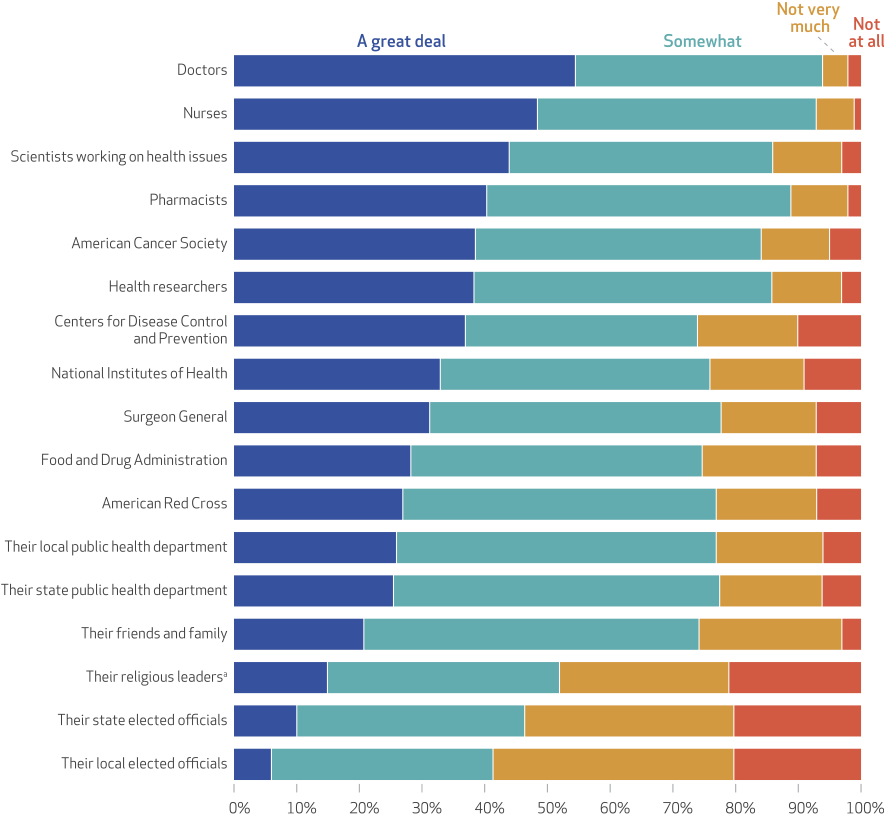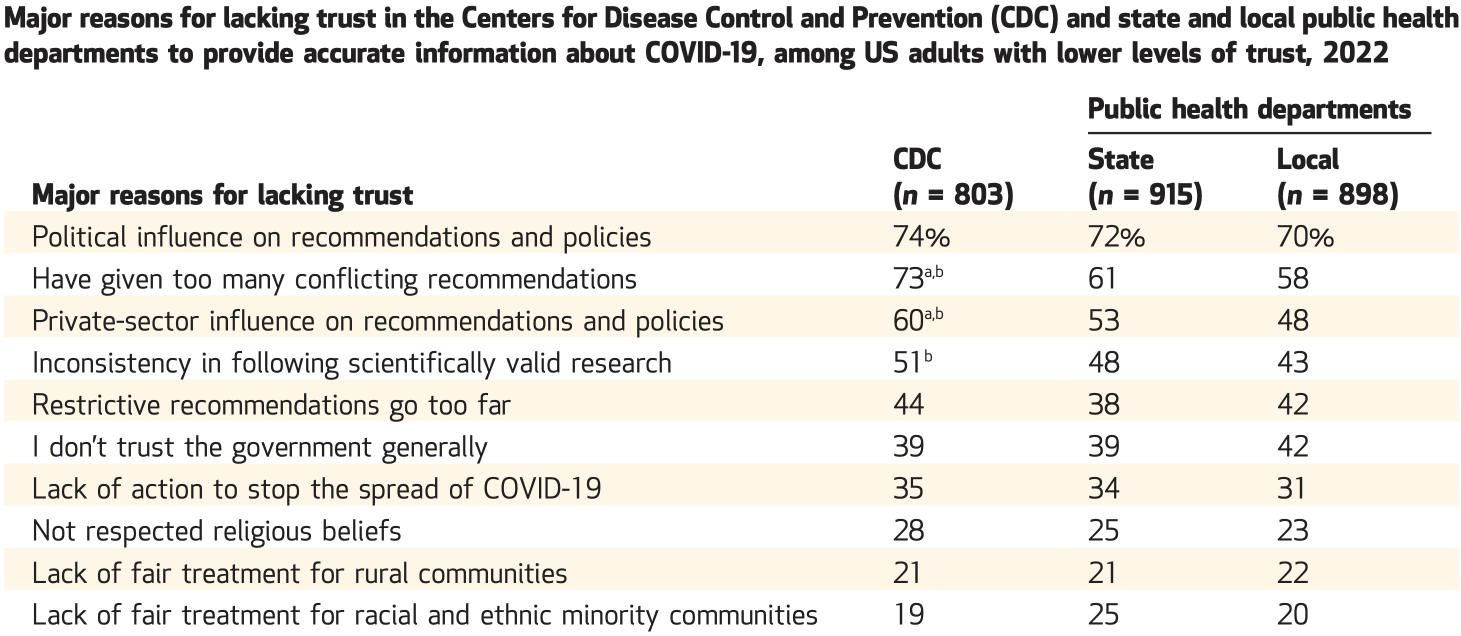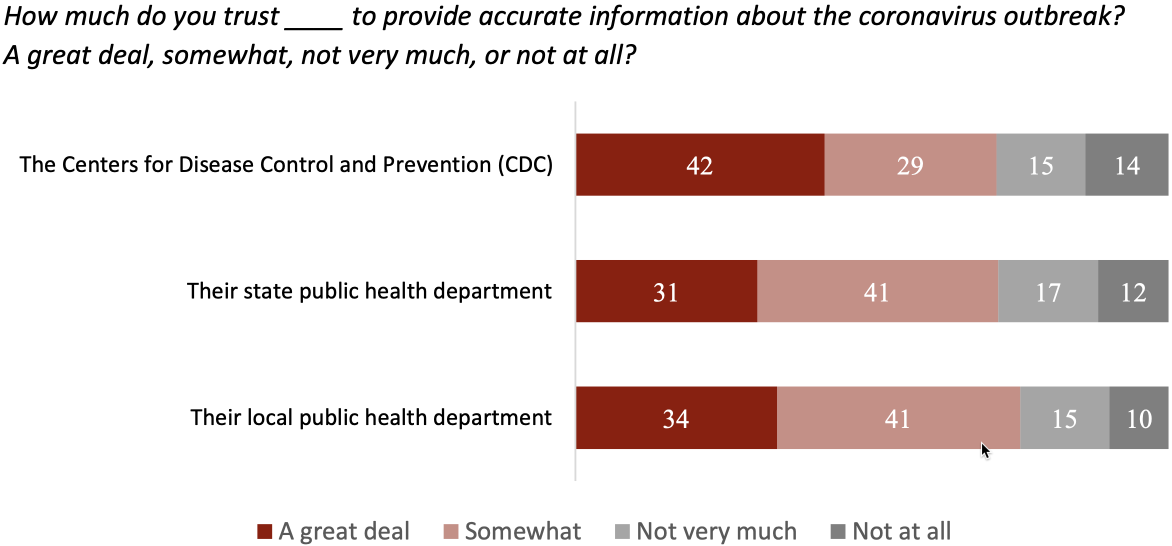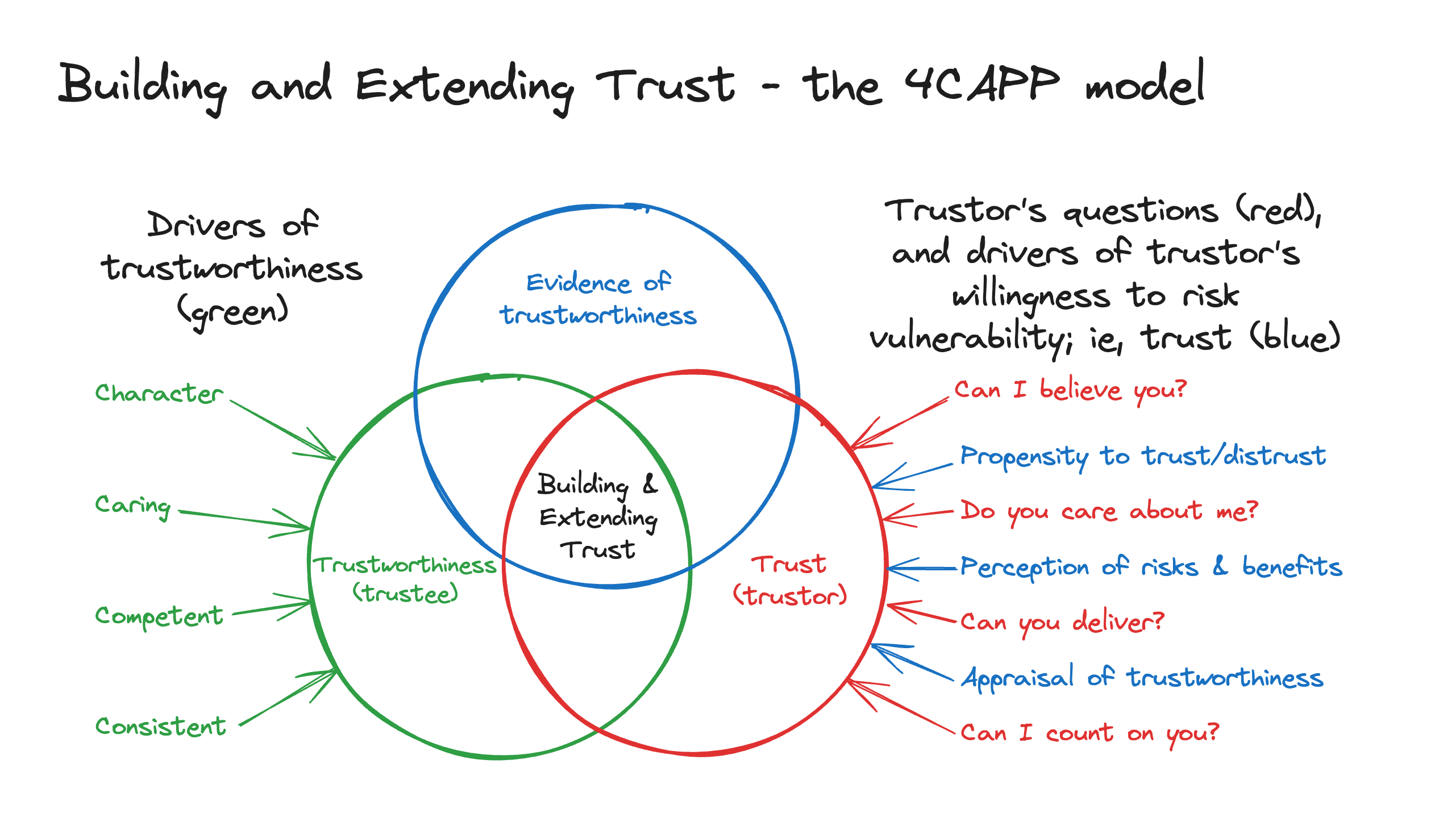Introduction
Interpersonal trust and trust of government institutions were the strongest drivers of successful population-based, public health interventions during COVID-19 pandemic.
Communities (“trustors”) ask of government (“trustee”) the following questions:
- Can I believe you?
- Do you care about me?
- Can you deliver?
- Can I count on you?
These questions apply to all interpersonal relationships. Each of us are always simultaneously in the roles of trustor and trustee, and we are always asking and answering these very questions, implicitly or explicitly.
Key points
- Both trust and trustworthiness are inherent in all relationships, but rarely defined precisely.
- Trust is a psychological state of the trustor—the willingness to be vulnerable to the actions of another party. It’s a choice, mostly intuitive, but sometimes deliberative.
- The trustor asks four questions of the trustee: Can I believe you? Do you care about me? Can you deliver? Can I count on you?
- The trustor’s willingness to extend trust is determined by their propensity to trust or distrust, their assessment of the risk and benefits of extending trust, and the appraisal of the trustee’s trustworthiness.
- Trustworthiness are attributes of the trustee—that drive the trustee’s reasoning, thoughts, feelings, and actions that affect the trustor’s willingness to extend trust.
- The trustee’s trustworthiness is determined by evidence of their character, caring, competence, and consistency.
- For the trustee to build trust,
- be trustworthy;
- use a human-centered approach to assess the needs of the trustor
- their propensity to trust/distrust,
- their perception of risk and benefits, and
- their appraisal of your trustworthiness; and
- act in ways that inspire trust in the trustor.
- CAUTION: Being trustworthy is necessary but not sufficient to build trust.
- For the trustor to extend trust, options include
- assuming good intent and then learn and iterate;
- assessing your
- propensity to trust/distrust,
- perception of risks/benefits to you, and
- appraisal of trustee’s trustworthiness; or
- communicate clearly what you need to have trust and confidence in the trustee.
Online slide presentation
The online slide presentation below was adapted from a commencement address I delivered for the graduation of the California Health Care Foundation (CHCF) Leadership Fellows, Cohort 21, on September 21, 2023. To view presentation, put cursor over slide presentation and select “Toggle fullscreen.”
You can also download PowerPoint slides or PDF slides.
Feedback is valued and appreciated.
Trust and trustworthiness matter
The evidence is clear: interpersonal trust and trust in government are the key drivers of successful population-based interventions during public health emergencies [1–3].
Figure 1

Figure 2

Figure 3

4CAPP model of trust
The 4CAPP is my way for remembering
- The 4 C drivers of trustworthiness (trustee)
- Character
- Caring
- Competent
- Consistent
- The AAP drivers of extending trust (trustor)
- Appraisal of trustworthiness
- Propensity to trust/distrust
- Perception of risks and benefits

Building trust by being trustworthy
Can I believe you? \(\rightarrow\) Have Character
- Universal values - embody and promote
- Humility - general, intellectual, and cultural
- Moral compass and ethical behavior
- Sincerity, honesty, and loyalty
- Integrity and courage
- Accountability
- Transparency
Do you care about me? \(\rightarrow\) Be Caring
- Ensure psychological and physical safety
- Be kind and compassionate
- Ensure equity/fairness and dignity
- Promote inclusion and belonging
- Be trauma-responsive and -preventive
- Be curious, not judgmental
- Use humble inquiry
Can you deliver? \(\rightarrow\) Be Competent
“Leadership is getting results in a way that inspires trust.” … SMR Covey
- Leadership philosophy and praxis
- Interpersonal and team skills
- Management (strategic execution)
- Occupational mastery
Can I count on you? \(\rightarrow\) Be Consistent (and reliable)
- Be consistent by reducing uncertainty
- improve your “batting average” (percent successful)
- reduce undesired variability (ie, don’t be erratic)
- be reliable (100%) for commitments and promises
- fulfill commitments
- keep promises
Extending trust (deciding to risk vulnerability)
- Set a default (“assume good intent”) and PDSA to assess your
- propensity to trust,
- perception of risk and benefits to you,
- appraisal of trustee’s trustworthiness
- Reciprocate with the “shortcut” method to building trust
- “I want us to strengthen our trust and confidence in each other.
- Here’s what I need from you (be honest): 1, 2, 3, …
- What do you need from me?” (The more specific, the better.)
- Model the trust you expect of others
- be trustworthy,
- behave in ways that inspire trust, and
- design systems that promote a culture of trust.